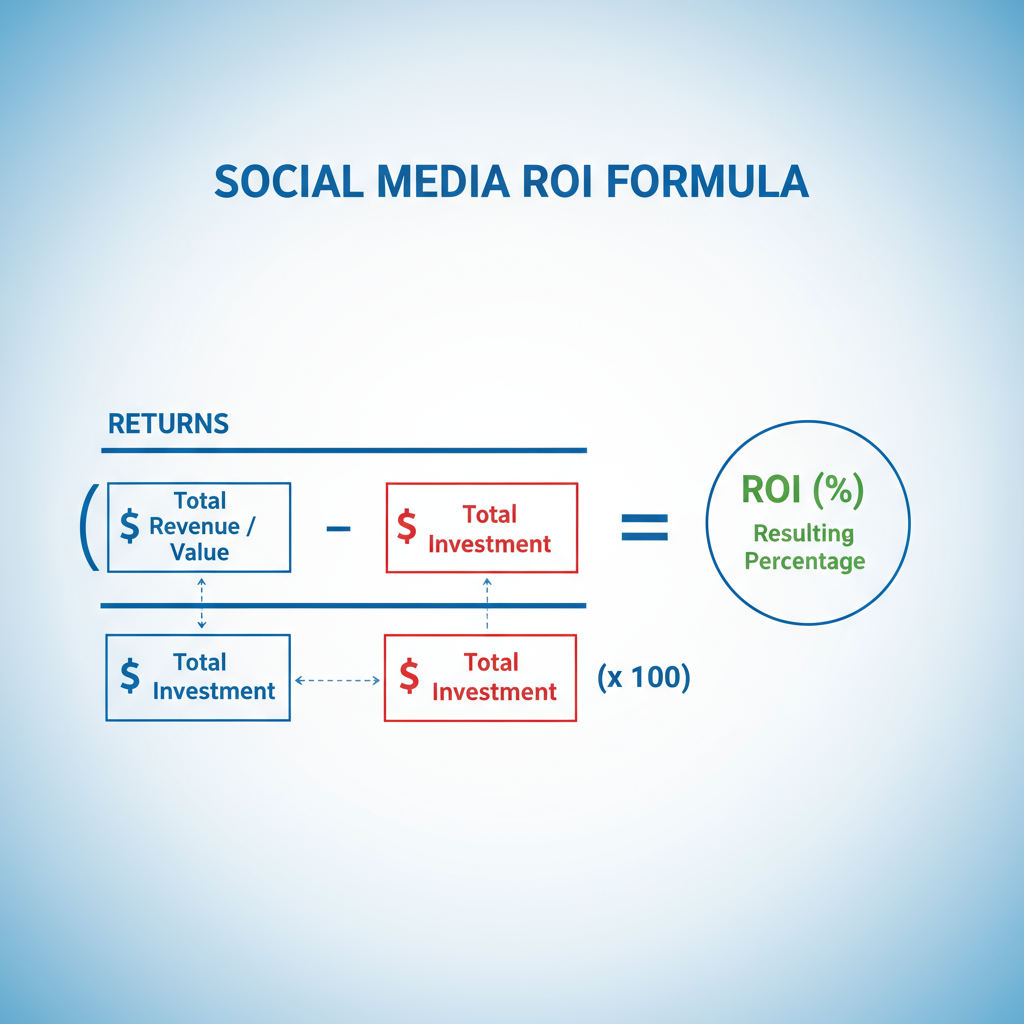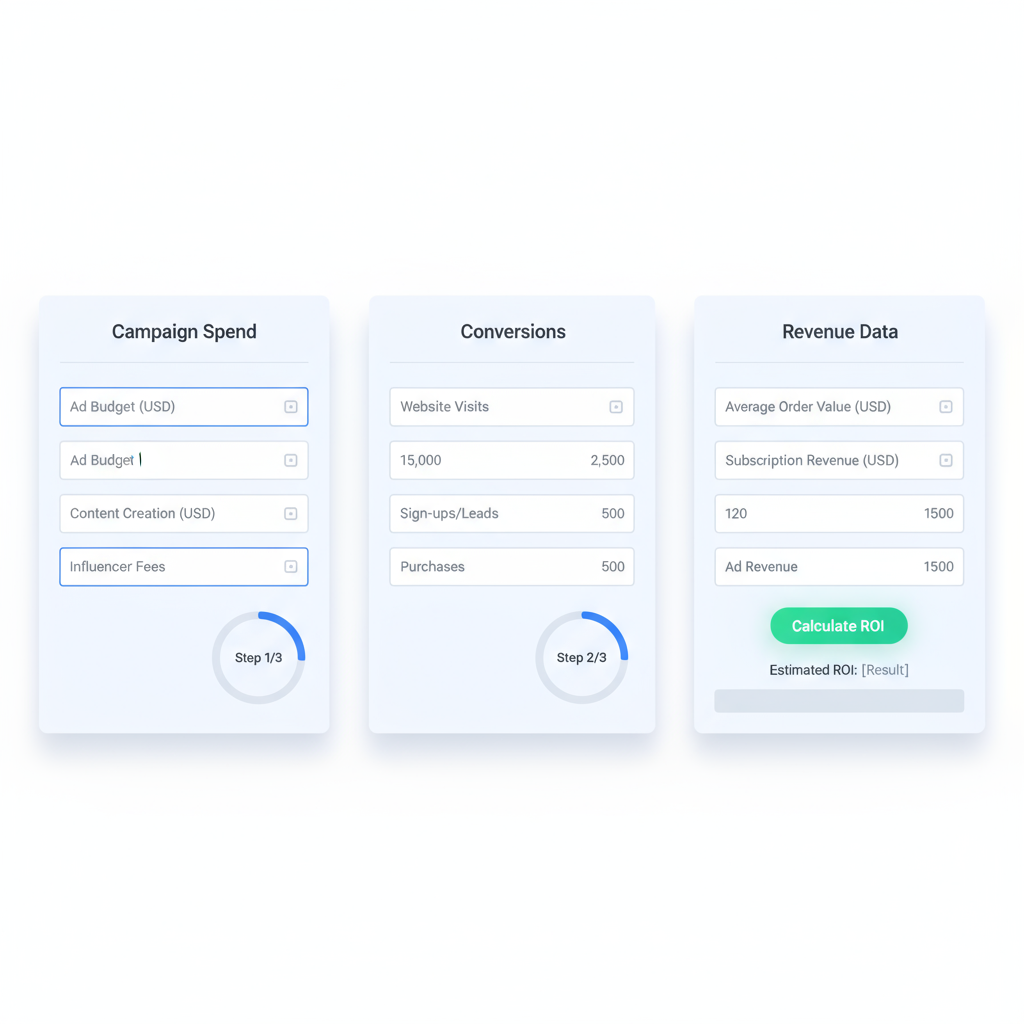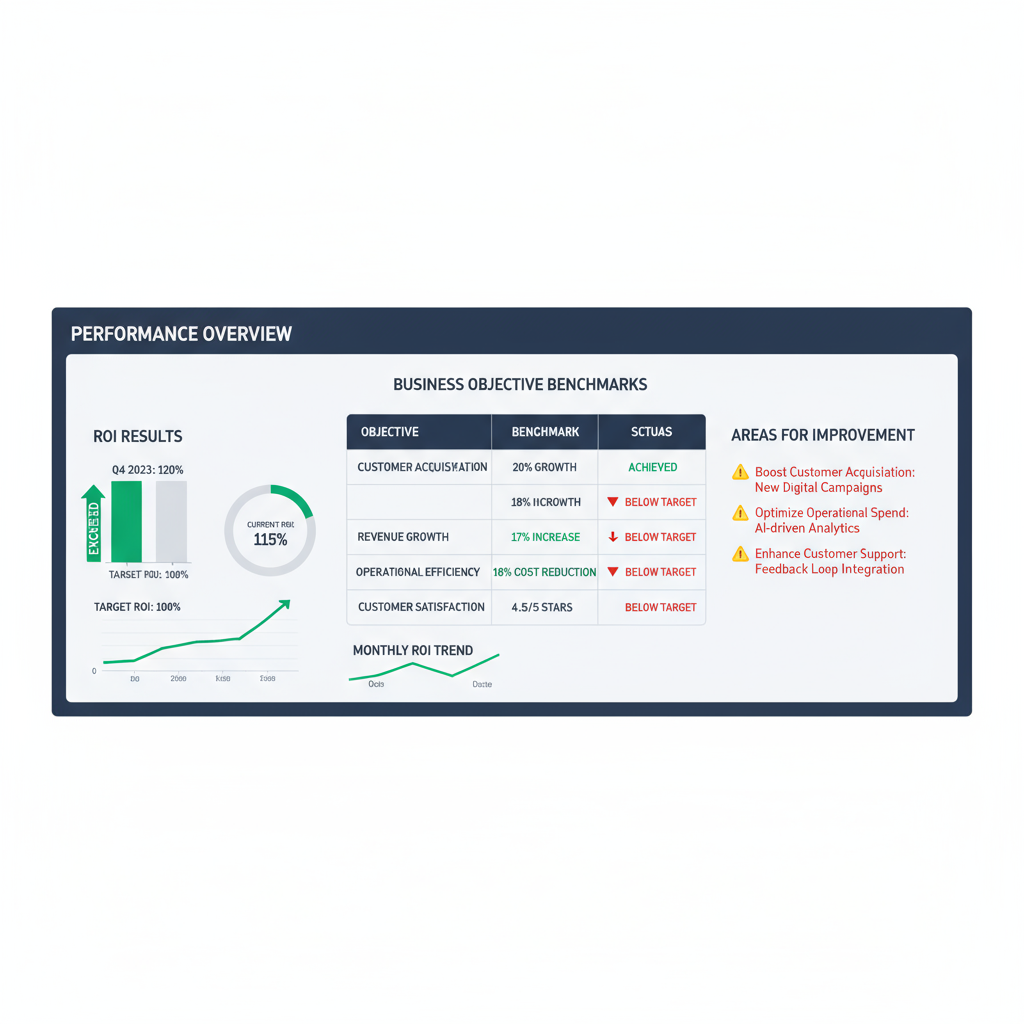Using a Social Media ROI Calculator to Measure Marketing
Learn how to measure and improve social media ROI using a calculator, track key metrics, set benchmarks, and avoid common calculation mistakes.

Understanding Social Media ROI and Why It Matters
Tracking the return on investment (ROI) from your social media campaigns is crucial to knowing whether your efforts on platforms like Facebook, Instagram, LinkedIn, or Twitter are paying off. In this guide, we’ll walk through how to measure, interpret, and improve your social media ROI—including how to use a social media ROI calculator effectively—so you can connect creative content to real, measurable business results.
Social media ROI measures the monetary return generated from your marketing activities compared to the costs invested. For marketers, it serves as a performance gauge to determine if money, time, and resources spent lead to genuine revenue or significant business value.
Accurately measuring ROI helps you:
- Justify marketing budgets to stakeholders.
- Identify which campaigns yield the highest returns.
- Fine-tune strategies for greater efficiency.
- Use data to guide future investments.

---
The Basic ROI Formula for Social Media Campaigns
Before using a social media ROI calculator, it’s important to understand the underlying math. The standard formula is:
ROI (%) = ((Revenue from Social Media – Social Media Costs) / Social Media Costs) × 100Where:
- Revenue: Total monetary value from social media efforts (e.g., purchases attributed to campaigns).
- Costs: Paid ads, tools, staff time, content production, and other related expenses.
This formula ensures you know precisely what the calculator is computing behind the scenes.
---
Key Metrics to Collect Before Using the Calculator
Solid data inputs are critical for accurate ROI results. Collect these metrics from analytics dashboards and reports before using a calculator:
| Metric | Definition | Source Examples |
|---|---|---|
| Reach | Number of unique users who saw your content | Platform analytics, social insights |
| Engagement | Likes, shares, comments, reacts, link clicks | Engagement reports in analytics tools |
| Conversions | Number of desired actions taken (e.g., purchases, sign-ups) | Google Analytics goals, e-commerce tracking |
| Revenue | Total income generated directly from social media | Sales reports, CRM systems |
Additional useful data: Customer Lifetime Value (CLV) and cost-per-click (CPC), especially for advanced ROI analysis.
---
Step-by-Step: Inputting Data Into a Social Media ROI Calculator
Whether it’s an online tool or spreadsheet-based, here’s how to feed the right information into your calculator:
- Gather All Costs
- Include ad spend, influencer fees, software subscriptions, and staff wages linked to social media activities.
- Include All Revenue Sources
- Track sales from links in posts, promo codes, lead conversions, and subscription upgrades via referrals.
- Enter Metrics Into the Calculator
- Fill in fields for total revenue, total costs, and optionally, metrics like reach or conversions for deeper insights.
- Review Automatic Calculations
- The tool will output ROI in percentage form and may visualize trends.
- Export or Save Results
- Download reports for stakeholder presentations or internal tracking.

---
Setting Realistic Goals and Benchmarks
A ROI figure means little without a context for comparison. Consider:
- Industry Standards
- Different industries have different average ROI ranges.
- Past Performance
- Compare new results against historical campaigns.
- Campaign Type
- Awareness campaigns may have lower short-term ROI but high long-term value.
Example: E-commerce campaigns might aim for ROI above 300%, while B2B lead-gen campaigns expect slower build-up over months.
---
Common Mistakes When Calculating ROI
Avoid these frequent pitfalls to ensure an accurate picture:
- Ignoring Indirect Value
- Brand recognition and customer loyalty may contribute long-term gains.
- Mixing Attribution Models
- Align revenue source tracking with your chosen model (e.g., last click, first click).
- Underestimating Costs
- Include creative production, photography, and time spent by interns managing accounts.
- Over-reliance on Vanity Metrics
- High engagement without conversions can mask poor ROI.
---
Interpreting Results in Line With Business Objectives
When reviewing your social media ROI calculator output, ask:
- Does this ROI align with growth targets?
- Is the ROI trend improving over time?
- Which platforms or content types deliver the highest ROI?
Linking results to business objectives—such as increasing customer base, boosting revenue, or improving retention—helps prioritize strategies for greater success.
---
Improving ROI Based on Calculator Insights
ROI data can uncover both strengths and weaknesses. Make adjustments like:
- Content Adjustments
- Produce more formats that generate high conversion rates.
- Target Refinement
- Narrow ad targeting to high-value audiences.
- Platform Selection
- Prioritize channels that outperform others.
- Post Timing
- Publish during peak engagement hours.
- A/B Testing
- Test visuals, headlines, and CTAs to improve conversion rates.

---
Manual Calculation vs. Automated Online Calculators
Both manual and automated methods have benefits:
| Method | Pros | Cons |
|---|---|---|
| Manual Calculation | No special tools required, full control over formulas | Time-consuming, prone to human error |
| Automated Calculator | Fast, visualizes data, integrates multiple metrics | Requires accurate data entry, may obscure underlying formulas |
Some tools integrate directly with platform APIs to pull data automatically, reducing administrative work.
---
Best Practices for Ongoing ROI Tracking and Reporting
Keeping track over time ensures continued profitability:
- Track ROI Regularly
- Monthly or quarterly, depending on campaign length.
- Use Consistent Data Sources
- Avoid switching tools mid-analysis.
- Integrate Cross-channel Data
- Include email, paid ads, and other marketing channels.
- Visualize Trends
- Use charts for quick stakeholder comprehension.
- Document Insights
- Maintain logs of successes and failures for future planning.
---
Summary
Social media ROI measurement is not just math—it’s a strategy for connecting content to profit. By using a social media ROI calculator, you streamline data analysis, avoid errors, set realistic benchmarks, and pinpoint areas for improvement.
The keys to success are accurate data collection and consistent tracking. Choose the calculation method that fits your resources, and make ROI tracking part of your ongoing routine.
Ready to increase your ROI? Start gathering your metrics today and explore calculators that automate the process—turning your social media creativity into measurable business growth.




